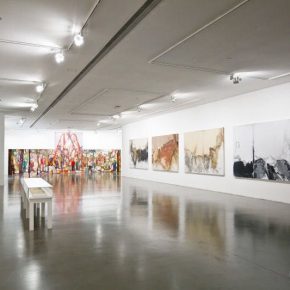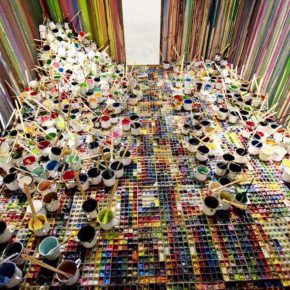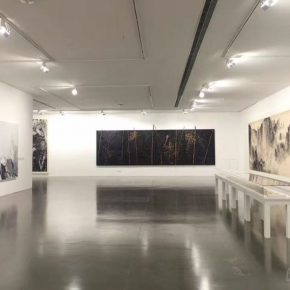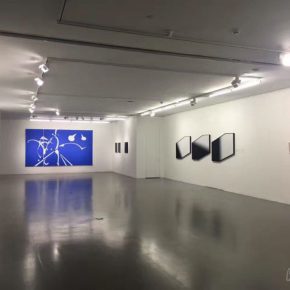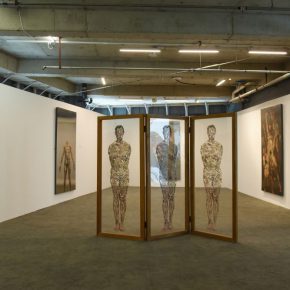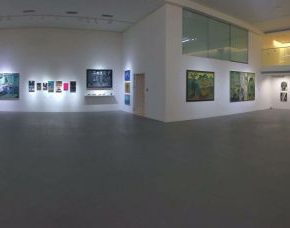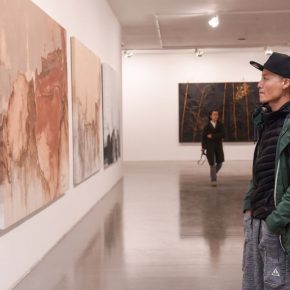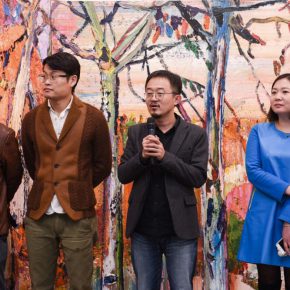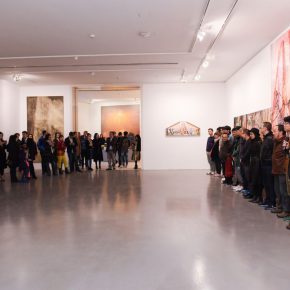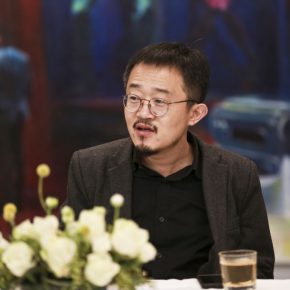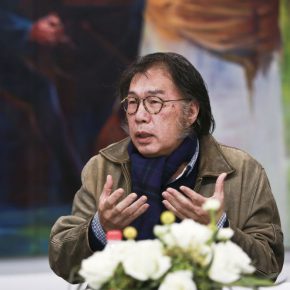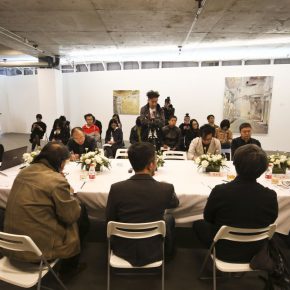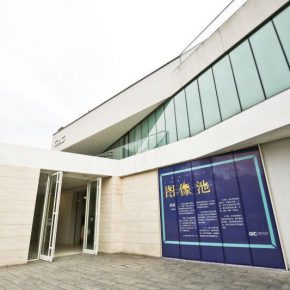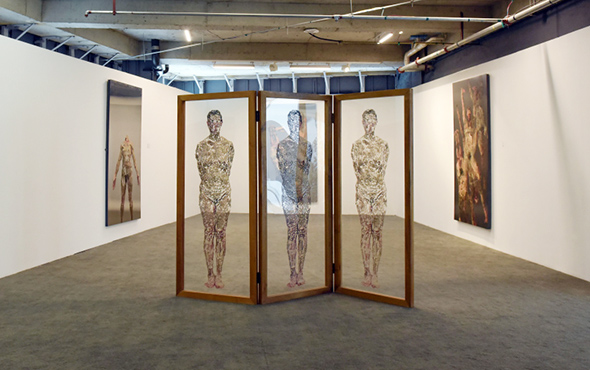
Planned by Associate Professor Liu Libin from CAFA, the large-scale contemporary art exhibition “Image Pool” is held at the Ginkgo Art Center from Oct. 22 to Nov. 23, 2016. The exhibition focuses on the artists’ approach to image processing and the thought process in the era of the proliferation of images. Since the invention of photography, the subject of art creation has started an ever increasing dialogue with “image”, and “image” as an important referenced object, multi-dimensional processing has become the creative method of many artists.
The exhibition covers more than 200 works by 26 artists, including the latest masterpieces by many famous artists, thus presenting a multi-faceted contemporary art landscape. Liu Libin separates works into three sequences with a lack of any logical relationship, “The Literary Mind”, “Preserving Material”, “The Shadow”, which is derived from his experience and observation: “The Literary Mind” mainly discusses the creative method based on a traditional context and these artists are all located within changeable nodes. “Preserving Material” focuses on the recent hot topic of the “materiality” of painting. This section demonstrates the critical angle and the curator’s expectation as he hopes to explore a way that is different from the Italian Arte Povera and Japanese Mono-ha Art for Chinese artists. “The Shadow” is against the “image painting” that have recently appeared and the related paradox – what is the relationship between the artist and image? How does a creator cross the surface, the use of techniques to activate the image, the use of wisdom to generate a new artistic language, it is worth considering this.
What is the “Image Pool”? Is there Water in the Pool?The exhibition is entitled “Image Pool”, the curator offers people a very iconic concept, as if seeing a puddle where all kinds of artistic landscapes are floating. And then a consideration of what is the “Image Pool”? Is there water in the pool?
The key word of the “image pool” is the “pool”, the curator uses the word as inspiration because of his wait-and-see attitude, and examination of the whole of society, we can find an impetuous state, which is like water ready to boil that simmers to the surface. Architect Tang Keyang is impressed by the “pool” of the “image pool”. He believes that the English character pool perfectly corresponds to the Chinese character of “pool”, and the image pool is both three-dimensional and two-dimensional, between which there is a shallow relationship. Poet Xichuan is interested in whether there is water in the pool, and he eloquently talked about “what is in the pool”. Today, the shaping of an artist will be influenced by times, education, teachers and students, art history, and the whole artistic ecological atmosphere, which is the water of the pool. “Image Pool” showcases a rich content, behind which it includes the artists’ psychological state and identity, as well as the plan of the exhibition and the writing of art history that contributes to this state and identity.
Academic Reflection on the Image Studies with “Image”The use of images to explain the phenomenological nature of painting is not strange in the field of research into art history. “Imageology” is a research method in the history of art, developed from the iconography in the field of the research of European art history in the 19th century. The starting point is the image when studying the theme and content of the painting, and the in-depth meaning extends from the subject matter.
In the contemporary art atmosphere that is constantly breaking through boundaries and the pursuit of innovation, taking the image itself as an academic reflection, through this exhibition it is possible to present it, indicating a “return”. After all the boundaries have been cleaned up, the artists gradually fall into some confusion as to what should the artist do next? What are they doing? At this level, this exhibition provides an analytical approach.
“Is There an Image in the Pool? Is an Image Taken as a Certificate? – Research Produces the ReflectionThe use of curatorial methods to return to the study of art history and the observation of the contemporary artistic state is the main system that Liu Libin uses to plan exhibitions in recent years. The sifting of the works is included in the framework of its research and curating, so that the exhibition has become an argument and the work has become a document. But such sifting is the explanation, analysis, affirmation, and also creates doubt for Lui Libin when thinking and reflecting.
Before the opening of the pool, Liu Libing repeatedly said “Is there an image in the pool? Has an image been taken as a certificate?”, the two questions are the suspicion of the state in “certifying history by image”, and also intending to question the spectators and their peers. In the world where the image is diffusing and floating, reflecting and being reflected, floating and sinking, it is difficult to distinguish illusory from reality. From the “Breaking the Image” to “Image Pool”, what is the response when it returns to the discussion of the image itself in the current context of Chinese art? What can we learn and understand of the “imagery”? When the curator Liu Libin offers a view and research ideas, it offers visitors an open space for discussion.
Text by Zhu Li, translated by Chen Peihua and edited by Sue/CAFA ART INFO, Photo by Ginkgo Art Center


